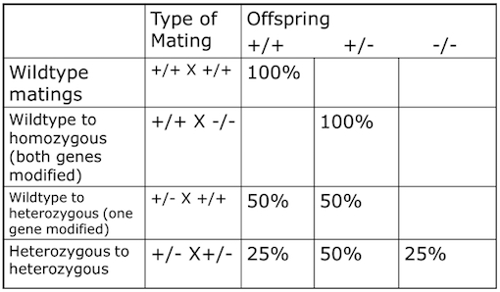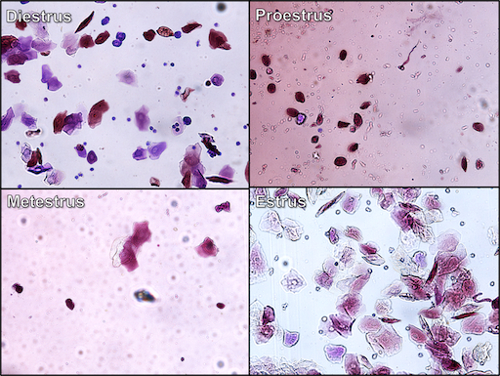育种和断奶的基本原理
Overview
来源: 凯斯图尔特, RVT, RLATG, CMAR;瓦莱丽. 施罗德, RVT, RLATG。圣母大学
每年都有数百万只老鼠和大鼠被培育用于生物医学研究。在世界范围内, 有几家大型商业繁育设施为老鼠提供研究实验室, 但许多设施也选择饲养小鼠和老鼠 in-house 以降低成本和增加研究选择。当在动物设施中繁殖时, 研究人员能够操纵动物的遗传学, 使怀孕时间满足研究的需要, 并根据需要与胚胎和新生儿一起工作。
小鼠和大鼠可以在各种方案和方法中繁殖。技术程序, 如阴道细胞学的使用, 阴道区域的可视化, 和观察的交配插头, 已经开发, 以协助同步育种, 以符合研究的要求。这篇手稿概述了老鼠和老鼠育种的基本基本原理和使用的技术程序。更详细的描述的复杂育种计划, 并全面描述的方法, 阴道细胞学, 可在参考书目。
Principles
常见类型的菌株和种群
小鼠和大鼠通常被培育成 outbred 种群、自交系和杂交菌株。Outbred 动物有相似的特征, 但在基因上并不相同。它们随机繁殖以保持杂合或遗传变异。与此相反, 近亲繁殖的动物已经杂交, 至少20代兄妹或亲子交配, 并具有遗传的纯合性。最后, 杂交动物是两种自交系交配的后代。
影响育种行为的因素
影响小鼠和鼠类繁殖性能的因素很多。雌性育种者的活力在很大程度上取决于近亲繁殖水平。outbred 的动物更强壮、更健壮, 因而产生更大更强的凋落物。一些常用的菌株, 如 C57BL/6 鼠, 表现出攻击性行为, 可能会干扰育种。当繁殖出一种侵袭性的菌株时, 所有的凋落物都应密切注视。动物从含有攻击性幼崽的垃圾中不应用于繁殖。温度、湿度和光照的波动会导致育种效率的下降。在育种室内的噪声和震动也被证明会造成有害的影响。控制这些变量在育种设施将减少一些影响。1具有基因修饰的动物往往缺乏耐寒性和肥沃性, 有些突变可能会导致幼崽在出生前或产后不久致死。
再生产计划
复制方案是类似的小鼠和大鼠。通常使用的系统是一夫一妻制交配一个雌性繁殖到一个雄性或一夫多妻制交配的两个或两个以上的女性繁殖到一个男性。雌鼠和大鼠均 polyestrous, 分娩后约20-24 小时进行产后发情。在产后发情期间, 雌性可以受孕一窝。对于因基因突变而繁殖寿命短的小鼠或大鼠 , 通常把雄性留在笼子里与雌配 , 这样她就能立即受孕。这种集约化育种计划可能会给女性带来压力, 因为她不断地哺乳和孕育。一个 nonintensive 方案涉及女性一旦明显怀孕就分离;直到她的垃圾被断奶后, 她才被送回男笼。这个系统对女性的要求要低得多。
育种为基因操作目的
基因工程动物 (GEAs) 要么是被击倒的动物, 要么已经从基因组或转基因动物身上除去了基因, 它们的基因被添加到基因组中。GEAs 被培育成一种近亲繁殖的菌株, 并经常与其他 GEAs 交配, 为非常具体的研究项目创建一个复杂的、基因操控的动物。复杂的育种计划被用来创造一些被移除的基因和其他人添加的菌株。动物模型的许多基因相关的疾病-包括, 但不限于, 阿尔茨海默氏症, 癌症, 中风和其他血液失调, 糖尿病和视网膜 pigmentos-已经通过动物基因工程发展。
大多数育种方案都可以依靠孟德尔遗传学来预测基因型比率。当一个野生的老鼠与一个修饰基因 (合) 的老鼠交配, 预期的结果将是50% 野生动物和50% 子。野生老鼠与两个修饰基因 (纯) 杂交的老鼠会导致所有的后代被子。当两个杂的动物杂交时, 所有三种基因型都应以下列百分比存在: 25% 野生、50% 子和25% 纯。正是从这些期望可以检测到胚胎致死基因 (i. e, 如果没有纯后代)。

图1。可能的交配和结果基于孟德尔遗传学.野生动物没有被基因改造, 被指定为 (++)。杂动物有一个被修改的基因的拷贝并且被指定作为 (-/+);纯合动物的两个副本的基因修改和被指定为 (-/)。
每年都有数百万只老鼠和大鼠被饲养在生物医学研究中, 许多机构选择这种 in-house 来降低成本, 增加研究选择。in-house 育种的优势是, 1) 研究人员能够通过选择性育种来操纵动物的遗传学 2), 他们可以时间怀孕, 以满足研究需要, 和 3) 他们可以与胚胎和新生儿必要的工作。然而, 要建立一个成功的育种计划, 你应该了解啮齿动物的动情周期。此外, 他们应该了解不同的交配方案, 影响鼠类繁殖行为的因素和断奶的考虑.....。
让我们从对啮齿动物动情周期的回顾开始。雌性大鼠和小鼠都是 polyestrous, 这意味着它们在一年或繁殖季节有不止一个发情周期。每个周期持续4-5 天, 可分为4个阶段: metestrus、发情、proestrus 和发情。发情是排卵阶段, 这意味着, 如果雌性是在 proestrus 或发情阶段, 她准备受孕。
确定动情周期阶段的一种方法是通过目测检查。手动控制动物的尾巴和前爪休息在一个笼盖上, 并仔细检查阴道开口和周围组织的大小。在 proestrus 阶段, 阴道开口是宽的, 其特征是周围组织肿胀, 这是粉红色的颜色和非常潮湿。通常有皱纹或条纹沿背部和腹边的开口。在发情期间, 阴道开口周围的肿胀减少, 组织没有湿润和粉红色。在 metestrus, 阴道开口是最小的, 并有微不足道的肿胀。在发情, 没有肿胀的组织周围的阴道面积和开放是小或关闭。
另一种更准确的方法来确定动情周期阶段是阴道细胞学的细胞样本收集通过洗灌或抽汲。对于灌洗, 在无菌200升末端放置一个乳胶球, 并在吸管中抽出大约100升的无菌双蒸馏水。接下来, 将鼠标抬出笼子, 然后把她放在铁丝笼上, 把她的尾巴放在你身上。牢牢抓住尾巴, 抬高老鼠的后腿, 这样只有前爪才会抓住盖子。将填充尖端的末端放在阴道导管的开口处, 而不穿透孔口。轻轻地压低灯泡, 在阴道开口处排出大约25-50 升的水。液体会自发地吸入运河, 没有尖端插入。慢慢释放对灯泡施加的压力, 液体就会退回到顶端。重复4-5 次, 使用相同的尖端, 灯泡和液体, 以获得足够数量的细胞在一个单一的样本。将液体放在玻片上, 使涂抹在室温下完全干燥。一旦干燥, 这些动情的涂片可以储存以备以后使用, 或者可以立即使用姬姆萨染色染色, 这是一个 one-step 染色, 不需要固定。该幻灯片放置在污渍45至60秒。
另一方面, 为擦洗, 湿一个2毫米棉花倾斜的涂抹器与盐水。将涂抹器的尖端插入受约束的小鼠的阴道, 然后轻轻地将尖端贴在阴道壁上。然后仔细地取出拭子, 然后将拭子在幻灯片上滚动, 将细胞转移到干燥的玻片上。这一过程被认为是压力, 如果不轻轻地进行适当的克制, 并与正确大小的棉签, 可能造成损害。像灌洗, 一旦幻灯片是干的, 它可以被染色的赖特姬姆萨染色。在染色后, 可以在显微镜下检查这些幻灯片。
如果雌性在 proestrus, 细胞就会被看作是圆形的、有组织的、有核的上皮细胞, 其细胞核比细胞质更暗。如果她是在发情阶段, 大多数细胞是 cornified 鳞状上皮细胞缺乏一个细胞核。它们在外观上是角的, 在密集的簇中。如果雌性在 metestrus, 细胞通常是白血球, 特别是中性粒细胞, 有一些 cornified 鳞状上皮细胞存在。在发情期间, 细胞存在通常是白细胞与少数有核上皮细胞的发生。
现在, 你已经了解了啮齿动物的动情周期, 让我们讨论如何建立交配。第一步是性别的确定, 这是通过比较生殖器距离来完成的。在女性中, 肛门和外生殖器之间的距离比雄性的短。根据研究的需要和菌株的繁殖效率, 交配方案可以是一夫一妻制--其中一个雌性被培育到一个雄性或一夫多妻--其中两个或两个以上的雌性被培育到一个雄性。
在时间方面, 鉴于啮齿动物动情周期是 short-only 4-5 天 long-one 可以建立交配随机。或者, 他们可以设置 "定时交配", 即在 proestrus 或发情阶段, 当她处于最大的接受度和生育期时, 将雌性引入交配笼。在这两种情况下, 交配应该在一天结束时建立, 因为啮齿动物是夜行性的, 晚上往往交配。第二天早晨, 女性被检查为一个交配插头-一个白色的肿块, 由阴道液体和精子持续12-24 小时 post-copulation。如果交配插头在视觉上不明显, 轻轻地插入一个钝探针的尖端进入阴道开口。交配插头的存在将阻碍探头在阴道开口0.5 厘米内的推进。在随机交配的情况下, 交配插头的外观通常需要三天。插头的存在证实交配并不保证雌性怀孕。
一旦交配插头被观察到, 女性应该被监测的迹象, 如怀孕的体重增加。如果堵塞的女性怀孕了, 那么插头被发现的那一天是胚胎日零或 E0, 第二天被认为是第一天的怀孕, 或 E1, 等等, 直到分娩-即分娩-这是在19至21天。产后约20-24 小时, 雌性大鼠和小鼠都有发情的经历, 可以再次受孕。
在一个密集的育种计划, 这是通常用于动物的繁殖寿命短, 由于遗传突变, 雄性动物留在笼子里的雌性和幼崽, 使女性可以受孕的另一垃圾立即。这个方案可能是压力的女性, 因为她是不断哺乳和孕育。相反, 非育种计划, 涉及分离的女性, 一旦她明显怀孕, 并没有返回到男性的笼子, 直到她的垃圾已经断奶, 使这一不太苛刻的育种计划。
影响小鼠和鼠类繁殖性能的因素很多。让我们回顾一下其中的一些, 它的出现频率更高。雌性育种者的活力在很大程度上取决于近亲繁殖水平。outbred 的动物更耐寒、更健壮, 因此它们会产生更大更强的凋落物。另一个影响繁殖性能的因素是攻击性行为。一些常用的菌株, 如 C57BL/6 小鼠, 有表现出侵略性的倾向, 这会干扰育种。当繁殖出一种侵袭性的菌株时, 所有的凋落物都应密切注视。动物从含有攻击性幼崽的垃圾中不应用于繁殖。温度、湿度和光照的波动会导致育种效率的下降。在育种室内的噪声和震动也被证明会造成有害的影响。具有基因修饰的动物往往缺乏耐寒性和肥沃性, 有些突变可能导致幼崽在出生前或产后不久致死。
现在让我们简单地回顾一下如何使这些实验动物的幼崽断奶。开始断奶的时间与育种计划不同。在非繁殖的情况下, 年轻人可能在21-28 天龄断奶。但是, 在集约化养殖的情况下, 每窝的幼崽在20天断奶, 以防止幼崽在下一窝产仔时出现。由于啮齿动物可以开始交配8周, 雄性和雌性幼崽在断奶时分离。只要有可能, 新断奶的幼崽不应该单独居住。
如果一个垃圾只包含一个特定性别的小狗, 那么就应该尝试把这只幼崽与另一窝中的同性犬同住。下面的手稿中列出了断奶幼崽可能的住房选择。应每日检查断奶小鼠和大鼠, 以确保它们茁壮成长。对于食物供应, 一小块食物, 每只老鼠一粒, 应该放在笼子地板上的头7-10 天, 在笼顶额外的食物。这将鼓励动物转移到有啮齿动物作为其唯一的食物来源。对于供水, 即使动物被安置在带有自动浇水系统的货架上, 也应该添加一个瓶子。这是为了防止脱水。
最后, 让我们看看科学家们是如何利用 in-house 育种方法来发挥他们的优势的。建立交配的最常见的应用之一是开发基因变异小鼠。为了研究一个基因的功能, 研究人员经常扰乱其基因编码。然而, 这些动物像人类是二倍体, 因此有两个相同的基因副本。因此, 为了完全打乱基因, 改变的老鼠需要培育, 以产生一个两个副本功能失调的动物, 换句话说, 一个纯合击倒。一份功能失调的小鼠称为杂或 hets。
建立 in-house 交配的另一个好处是测试产前接触测试化合物的效果。例如, 在这里, 研究人员为孕妇提供了一种含酒精的液体饮食, 从 E7 到 E13。然后在 E13 上, 他们解剖了怀孕的女性, 获得了胎儿的大脑, 并把它们切成薄片。最后, 染色的幻灯片显示, 产前酒精暴露增加细胞死亡的神经组织。
最后, in-house 育种还允许研究产后抑郁症等后妊娠障碍。在这项研究中, 科学家首先把垃圾从大坝上移到哺乳期。然后, 60 分钟后, 将幼崽重新引入大坝。并在雌鼠身上引起压力, 在笼子里增加了一个新的男性闯入者。然后, 研究人员观察了大坝的母亲侵略, 其中包括攻击和咬的入侵男性以及不同的产妇护理行为, 如幼犬梳理和护理。所获得的数据显示, 压力对产后产妇的侵袭和护理都有显著影响。
你刚刚看了朱庇特的视频的基础上育种和断奶老鼠和老鼠在实验室。你现在应该更好地了解啮齿动物的发情周期, 也知道如何确定周期阶段, 以及如何使用它来建立成功的交配计划。我们还回顾了影响育种行为的因素, 并解释了如何和何时断奶小鼠和大鼠幼崽。一如既往, 感谢收看!
Procedure
1. 配对动物时所需的信息包括利用适当的命名法、繁殖雄鸟的出生日期和设置日期的动物的应变/存量。准确的记录保存是繁殖殖民地的当务之急。
2. 对小鼠和大鼠的性别测定是通过比较生殖器距离来完成的。在女性, 肛门和外生殖器之间的距离比男性短。阴囊在雄性动物中的存在是另一个性别指标。
3. 选择和建立交配方案
注意: 有两种交配方案可以使用。
- Proestrus/发情定时交配: 这种方法依赖于在最大的接受度和生育力的情况下将雌性与雄性配对。
- 发情周期必须通过对外部生殖器的目测检查, 以观察 proestrus 和动情的变化, 或阴道分泌物的细胞学 (见下文)。
- 当雌性被确定为 proestrus 或发情时, 她在一天结束时与雄性配对, 因为动物通常在夜间交配。
- 第二天早晨, 女性被检查为一个交配插头 (见下文)。如果没有插头存在, 雌鸟可以留在白天的男性和检查一个交配插头在一天结束。另外, 如果确定她不再 proestrus 或发情, 她将从饲养笼中移除。
- 随机定时交配: 这种方法是基于事实, 啮齿动物的动情周期是非常短的, 4-5 天长。
- 对于这种方法, 交配可以设置任何时候, 和女性, 然后检查交配插头, 每天早晚, 直到一个插头被观察到。
- 女性在晚上与男性配对。
- 她在每天的开始和结束时都要检查一个交配插头, 直到发现插头。使用此方法时, 通常需要3天或更长的时间才能看到插头。
4. 预测怀孕
因为小狗的触诊是困难的直到以后在怀孕期间, 大约10-12 天, 商业超声系统为啮齿目动物被开发了;然而, 很少有动物研究设施有这种技术。因此, 可视化的交配插头, 观察阴道的变化, 或阴道细胞学通常是用来协助预测的时候, 一个女性已受孕的垃圾 (见下文)。然而, 这些方法都不能证实怀孕。一旦观察到交配插头, 就应该对雌性进行监测, 以发现怀孕的迹象, 如体重增加。
5. 确定动情周期阶段
- 目视检查
注意: 对于小鼠和大鼠的定时交配, 观察阴道对 proestrus 和发情的变化是确定动情周期的最快方法, 无需特殊设备。- 当用视觉方法评价发情周期时, 在同一个区域内对室内照明进行视觉检查是很重要的, 因为光源可以改变阴道组织的知觉颜色, 使评价变得困难。例如, LED 灯所投射的紫色色调使得视觉检测更加困难。
- 通过目测观察来评估动情周期的阶段, 每只老鼠都必须由尾巴手动约束, 前爪在笼盖上休息。
- 根据阴道周围组织的状况和阴道开口的大小, 对每个女性的阴道开口进行评估。2
- 在 proestrus, 阴道开口很宽, 其特征是周围组织肿胀。该组织是粉红色的颜色和非常潮湿。通常有皱纹或条纹沿背部和腹边的开口。
- 在发情期间, 阴道开口周围组织的肿胀减少, 组织不像湿润和粉红色。
- 在 metestrus 的阴道开口是最小的, 并有微不足道的肿胀。
- 在发情期间, 阴道周围组织没有肿胀, 阴道开口小且闭合。
- 阴道细胞学
由于小鼠和大鼠都是 polyestrous, 发情周期长很短, 从4-5 天不等。有时需要确定所有四阶段的发情: proestrus, 发情, metestrus, 和发情。阴道细胞学是一个非常准确的方法来确定这些阶段。还有两种标本采集方法: 无创阴道冲洗法和阴道穿刺法。- 阴道灌洗
- 所需材料为无菌200µl 管提示, 乳胶灯泡, 无菌双蒸馏水 (ddH20), 和清洁玻璃幻灯片。
- 在无菌200µl 末端放置一个乳胶灯泡。在吸管中绘制大约100µl 的无菌 ddH2O。
- 把老鼠从笼子里抬出来, 把她的尾巴放在铁丝网上。
- 牢牢抓住尾巴, 抬高老鼠的后腿。现在, 鼠标将只有前爪抓盖子。
- 如果鼠标小便, 等到排尿停止。如果阴道导管入口处有尿液, 则开口可以用 ddH 的小水枪冲洗2o. 更改用于漂洗的笔尖。
- 将 ddH2O 填充末端插入阴道导管的开口处, 而不穿透孔口。
- 在阴道导管开口处, 轻轻地压低灯泡, 将四分之一至一半的水 (约25-50 µl) 排出。液体会自发地吸入运河, 没有尖端插入。慢慢释放对灯泡施加的压力。液体会退到顶端。
- 避免释放压力太快, 以防止吸入液体进入灯泡。筛选的提示可能对此有用。
- 重复前面的步骤4-5 次使用相同的提示, 灯泡和流体, 以获得足够数量的细胞在一个单一的样本。
- 将液体放在玻片上, 使涂抹在室温下完全干燥。
- 为每只老鼠使用一个新的吸管。
- 一旦干燥, 这些动情的涂片可以立即染色或储存, 并在以后的日期染色。姬姆萨染色是最常用的着色幻灯片。这个污点是可利用的 one-step 污点, 不需要固定的幻灯片, 以防止细胞洗掉在染色过程中。根据制造商的说明, 幻灯片放置在污渍中45-60 秒。
- 然后在显微镜下对这些幻灯片进行检查, 所看到的细胞对应于周期的阶段: 1) 如果雌性在 proestrus, 那么细胞就被看成是圆形的、有核的上皮细胞的簇, 其细胞核的染色比细胞质;2) 如果雌性处于发情状态, 则大多数细胞是 cornified 鳞状上皮细胞, 缺乏细胞核, 呈角形, 并在密集的簇丛中发生;3) 如果雌性在 metestrus, 细胞通常是白色的血细胞 (特别是中性粒细胞与一些 cornified 鳞状上皮细胞存在) 与黑暗染色的细胞核, 形状像两个香肠连接在一起;4) 在发情期间, 存在的细胞通常是白细胞, 出现少数有核上皮细胞。
- 阴道拭物
- 所需要的材料是无菌棉签, 2 毫米直径尖端, 清洁玻璃显微镜幻灯片, 和无菌生理盐水。
- 用盐水沾上棉头的涂抹器。
- 将涂抹器的尖端插入受约束的鼠标的阴道。
- 轻轻地转动和滚动的尖端对阴道壁。小心地取下棉签。
- 通过在幻灯片上滚动拭子, 将电池转移到干燥的玻片上。
- 一旦该幻灯片是干的, 它可以染色与赖特姬姆萨染色。
抽汲被认为是一个有压力的过程, 而且--当有压力的时候, 老鼠会扰乱发情周期。经抽吸引起的阴道和宫颈刺激可诱发假。反复拭子阴道粘膜可造成损害, 如果不轻轻地执行, 适当克制, 并与 correct-sized 棉签。34
- 阴道灌洗

图2。阴道细胞学--啮齿动物发情周期的不同阶段
6. 可视化交配插头
这个插头包括阴道液和精子, 并坚持在阴道12-24 小时 postcopulation。该插头的存在证实交配, 但并不保证女性怀孕。如果被堵塞的女性怀孕了, 第一天的妊娠被认为是在插头被发现后的一天。
- 把老鼠从笼子里抬出来, 把她放在铁丝网上, 把她的尾巴朝你放在上面。
- 将鼠标放在尾巴上方施加压力, 使背部拱起, 以便更好地呈现阴道开口。
- 观察她的阴道开口为一个白色的肿块。交配插头可能没有视觉上的明显, 但可以通过使用钝探针确认。
- 使用探针的尖端, 轻轻地将其插入阴道开口。交配插头的存在将阻碍探头在阴道开口0.5 厘米内的推进。
- 探头必须用酒精消毒, 并在每次使用前完全干燥。
由于雌性有凋落物、出生日期、产仔数、出生数量、断奶次数、男性: 母幼崽比例以及基因型的比例都应记录在案。如果垃圾中的基因型与亲本的基因型不符, 必须进行重新测试以验证真实基因型。
7. 断奶
小鼠和大鼠的妊娠期约为21天。年轻人在21-28 天的年龄断奶。小鼠和大鼠都可以在8周龄前繁殖, 因此幼崽必须在早期就被性别分开。集约化养殖要求每窝幼崽在20天断奶, 以防止幼崽在下一窝出生时出现。对于 nonintensive 育种, 幼崽可以留在母亲过去20天的年龄, 往往高达28天的年龄。这可能是非常有益的许多转基因菌株, 因为幼崽可能不像 nonengineered 或野生动物的活力。
雄性和雌性幼崽在断奶时分开。只要有可能, 新断奶的幼崽不应该单独居住。如果一只垃圾只包含一个特定性别的小狗, 那么就应该尝试把这只幼崽与其他性别相同的狗放在一起。可能的住房选择是: 1) 如果不在集约化饲养笼中, 一只母幼崽可能留在母亲身上;2) 一只雌性或雄性幼崽可与其他相同性别的幼崽放在同一年龄的不同垃圾中;3) 如果父母是一夫一妻制的一对, 雌鸟可以从笼子里移除, 让一只雄性小狗与父亲住在一起;4) 一只雄性小狗可能与雌性兄弟姐妹一起居住, 年龄可达5周。幼崽的性别应该被验证一周断奶, 以防止不必要的垃圾从不适当的分离幼崽。
应每日检查断奶小鼠和大鼠, 以确保它们茁壮成长。虽然关于实验室动物的护理和使用指南5指出, 必须向动物提供食物以防止粪便和尿液污染, 但新断奶的小鼠应得到少量食物 (每鼠标) 放置在笼地板上的玻璃盘 (培养皿) 中。这将鼓励动物转移到有啮齿动物作为其唯一的食物来源。即使是那些被安置在货架上的动物, 通过自动浇水系统为笼子提供水, 如果老鼠看起来脱水, 也可以将水瓶添加到笼子里。
| 名称 | 菌落类型 | 描述 |
| 国际 | Outbred | 白化 |
| 瑞士-韦伯斯特 | Outbred | 白化 |
| balb/c/c | 自交系 | 白化 |
| fvb | 自交系 | 白化 |
| C57BL/6 | 自交系 | 黑色外套颜色 |
| C3H | 自交系 | 褐色外套颜色 |
| DBA/2 | 自交系 | 棕色/灰色外套颜色 |
| 裸裸体 (女/女) | 自交系 | 毛 |
| scid | 自交系 | 严重联合免疫缺陷小鼠-各种大衣颜色 |
表1。常用的小鼠污渍和股票。
| 名称 | 菌落类型 | 描述 |
| 大 | Outbred | 白化 |
| 大 | Outbred | 白化 |
| 费希尔344 | 自交系 | 白化 |
| 刘易斯 | 自交系 | 白化 |
| 长埃文斯 | 自交系 | 蒙面, 黑白 |
表2。常用大鼠品系及砧木
Application and Summary
在内部繁殖的殖民地为研究提供了灵活性, 特别是利用胚胎或新生儿的项目。使用交配插头和阴道细胞学的定时交配等技术, 可以更准确地预测受孕和妊娠的日期。这使得研究人员可以更仔细地计划他们的实验。控制环境因素, 如光循环, 温度, 湿度和振动, 将优化育种结果。
References
- Breeding Strategies for Maintaining Colonies of Laboratory Mice. A Jackson Laboratory Resource Manual. http://ko.cwru.edu/info/breeding_strategies_manual.pdf.
- Byers, S. L., Wiles, M. V., Dunn, S. L., and Taft, R. A. 2012. Mouse estrous cycle identification tool and images. PloS One. 7, 1-5.
- McLean, A. C., Valenzuela, N., Fai, S., Bennett, S. A. L. 2012. Performing vaginal lavage, crystal violet staining, and vaginal cytological evaluation for mouse estrous cycle staging identification. J. Vis. Exp. 67, e4389. doi:10.3791/4389.
- Mamrot, J., Pangestu, M., Walker, D., Gardner, D. K., and Dickerson, H. 2015. Confirmed dioestrus in pseudopregnant mice using vaginal exfoliative cytology improves embryo transfer implantation rate. Reproductive BioMedicine Online. 31. 538-543.
- Institute for the Laboratory Animal Research. 2011. Guide for the care and use of laboratory animals, 8th ed. Washington (DC): National Academies Press.
Tags
跳至...
此集合中的视频:

Now Playing
育种和断奶的基本原理
Lab Animal Research
35.8K Views

啮齿动物的处理和克制技术
Lab Animal Research
175.0K Views

基本护理程序
Lab Animal Research
28.0K Views

啮齿动物识别 I
Lab Animal Research
54.9K Views

啮齿动物鉴定 (2)
Lab Animal Research
25.7K Views

药物注射 I
Lab Animal Research
100.9K Views

药物注射 II
Lab Animal Research
35.0K Views

药物注射 III
Lab Animal Research
31.5K Views

药物注射 IV
Lab Animal Research
51.8K Views

血液采集 I
Lab Animal Research
172.1K Views

血液采集 II
Lab Animal Research
73.5K Views

麻醉诱导与维护
Lab Animal Research
50.8K Views

啮齿动物手术的考虑事项
Lab Animal Research
22.5K Views

诊断尸检和组织采集
Lab Animal Research
58.2K Views

无菌组织采集
Lab Animal Research
34.9K Views
版权所属 © 2025 MyJoVE 公司版权所有,本公司不涉及任何医疗业务和医疗服务。